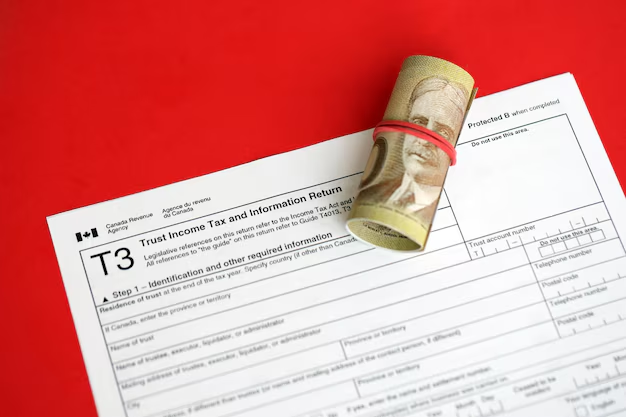Understanding Roth IRA Conversion Taxes: Do You Have to Pay Taxes Immediately?
In recent years, Roth IRA conversions have emerged as a popular strategy for retirement planning. They allow you to transfer funds from a traditional IRA or other retirement accounts into a Roth IRA, providing opportunities for tax-free growth and withdrawals in retirement. However, one question that frequently arises is whether you need to pay taxes immediately on a Roth conversion. Let's explore the nuances of Roth conversions, the tax implications, and how to manage these effectively.
What is a Roth IRA Conversion?
A Roth IRA conversion involves moving funds from a traditional IRA, 401(k), or another retirement account into a Roth IRA. The primary advantage of this move is that future withdrawals are generally tax-free, provided certain conditions are met. This can be particularly beneficial for those who anticipate being in a higher tax bracket in retirement.
Key Benefits of a Roth IRA
- Tax-Free Growth: Once your money is in a Roth IRA, it grows tax-free.
- Tax-Free Withdrawals: Withdrawals including gains can be tax-free if certain requirements are met.
- No Required Minimum Distributions (RMDs): Unlike traditional IRAs, Roth IRAs don't require you to take distributions at a certain age.
- Estate Planning Advantages: Roth IRAs can be inherited tax efficiently.
Are Taxes Due Immediately?
The short answer is yes—taxes are due in the year you make the conversion. When you convert funds to a Roth IRA, the amount converted is added to your taxable income for the year. These additional taxes can affect your financial situation significantly, so it's crucial to plan accordingly.
How Are Taxes Calculated?
The taxes due on a Roth conversion are determined by adding the converted amount to your gross income for the year. It is taxed as ordinary income, and this can have several implications:
- Income Tax Bracket: Converting a large amount could push you into a higher tax bracket.
- State Taxes: Some states also tax your conversion, impacting overall tax liability.
- Additional Tax Considerations: For high-income individuals, additional Medicare surtaxes might apply.
Strategically Planning Your Roth Conversion
Planning is key to making the most out of a Roth conversion without incurring unnecessary tax burdens.
Consider Your Current Tax Bracket
If you're currently in a lower tax bracket, it might make sense to convert more funds now, taking advantage of the lower tax rates.
Spread Out the Conversion
Instead of converting a large sum in one year, spread conversions over several years to manage and potentially lower your tax liability. This strategy can help you avoid being pushed into higher tax brackets.
Offsetting with Losses
Consider timing your conversion with years when you can offset the additional income with tax losses or deductions. This can include business losses or deductible medical expenses.
Utilize Partial Conversions
Conducting partial conversions as opposed to converting all your available funds can help in staying within a particular tax bracket and make taxes more manageable.
Considerations and Potential Risks
Impact on Social Security and Medicare
Converting to a Roth increases your taxable income, which might affect Social Security benefits. Higher income could also result in increased Medicare premiums.
Potential Impact on Financial Aid
If you have children attending college, a Roth conversion can affect your Expected Family Contribution (EFC) and subsequently impact financial aid eligibility.
Timing and Market Conditions
Market conditions can influence your conversion strategy. When market values are low, converting can be more tax-efficient because the taxable value of the converted assets is lower.
Looming Tax Law Changes
Stay informed about potential tax law changes that may affect the strategic timing of your conversion. Legislative changes can impact taxation rates or offer periods of conversion incentives.
Practical Tips for Managing Taxes on Roth Conversions
Below is a concise list of strategies to effectively manage the taxes associated with Roth conversions:
- 🗓️ Timing: Convert in years of low income to minimize the tax burden.
- 📈 Incremental Approach: Spread conversions across multiple years.
- 🛠️ Adjust Withholding: Consider adjusting your tax withholding or making estimated tax payments to avoid penalties.
- 🔍 Professional Guidance: Consult with a tax advisor or financial planner to tailor the strategy to your situation.
Summary of Key Points
Here is a quick summary highlighting essential considerations for Roth conversions:
| Key Aspect | Action or Consideration |
|---|---|
| Tax Timing | Be prepared to pay taxes in the conversion year. |
| Income Impact | Consider income changes, including tax bracket shifts. |
| Conversion Strategy | Use staggered conversions to manage tax liability. |
| Professional Advice | Seek financial and tax advice for personalized strategies. |
Conversion strategies should align with your long-term financial and retirement goals, and the above considerations can guide you in reducing unexpected tax consequences.
Wrapping Up Your Roth Conversion Strategy
Roth IRAs can be a powerful tool for tax-free growth and withdrawals, but the Roth conversion process requires careful planning. Taxes on conversions are due in the year they occur, making it important to tackle the decision with a comprehensive understanding of your tax situation and financial aspirations.
Approaching Roth conversions strategically can ultimately lead to significant tax savings and increased financial security in your retirement years. While this guide provides a foundational overview, remember that every financial decision should fit into your broader financial strategy. Collaboration with a trusted financial advisor can ensure your Roth conversion aligns with your unique circumstances and long-term goals.

Related Topics
- Are Roth Conversions Taxable
- Can You Do a Roth Conversion From An Inherited Ira
- Do Roth Conversions Count As Contributions
- Do Roth Conversions Count As Rmd
- Does a Roth Conversion Count As a Contribution
- Does a Roth Conversion Count As An Rmd
- Does Roth Conversion Count As Rmd
- How Are Roth Conversions Taxed
- How Do Roth Conversions Work
- How Does a Roth Conversion Work